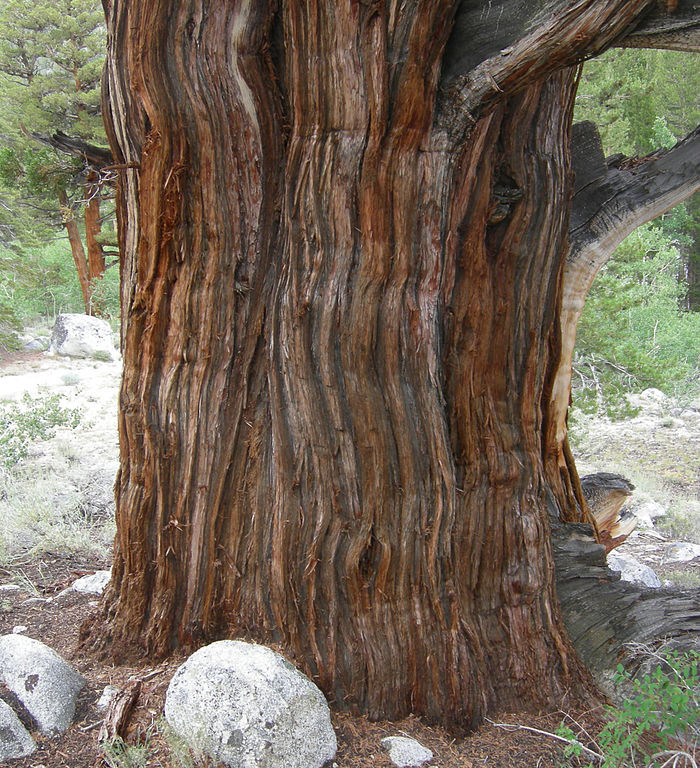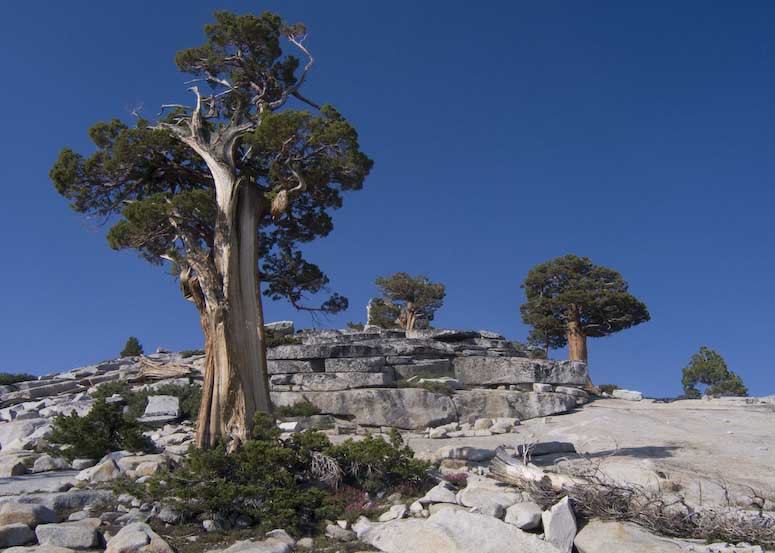Juniperus occidentalis var. australis, first described in 1966 by Frank Charles Vasek (born 1927), is commonly known as Sierra juniper.
Description. Sierra juniper is a medium-sized tree which will grow to mature heights of 38 to 80 feet (12 - 26 m) tall with a stout trunk up to 10 feet (3 m) in diameter at breast height. Seed cones are 0.2 to 0.35 inch (5-9 mm) in diameter. Most plants dioecious, but about 5-10% are monoecious. This variety differs from the typical species in the following ways:
- var. australis is 90% dioecious versus 50% for the type.
- Branchlets in var. australis mostly have 4 scale leaves per whorl versus 3 in the type.
- Mature seed cones in var. australis average 0.33 inch (8.5 mm) in diameter. In the type they are smaller at 0.3 inch (7.5 mm).
- Seedlings of var australis often have 3-4 cotyledons. The type only has 2.
Distribution. This variety is native the U.S.A - California and westernmost Nevada, south of 40° 30'² N latitude in the Sierra Nevada and San Bernardino Mountains.

